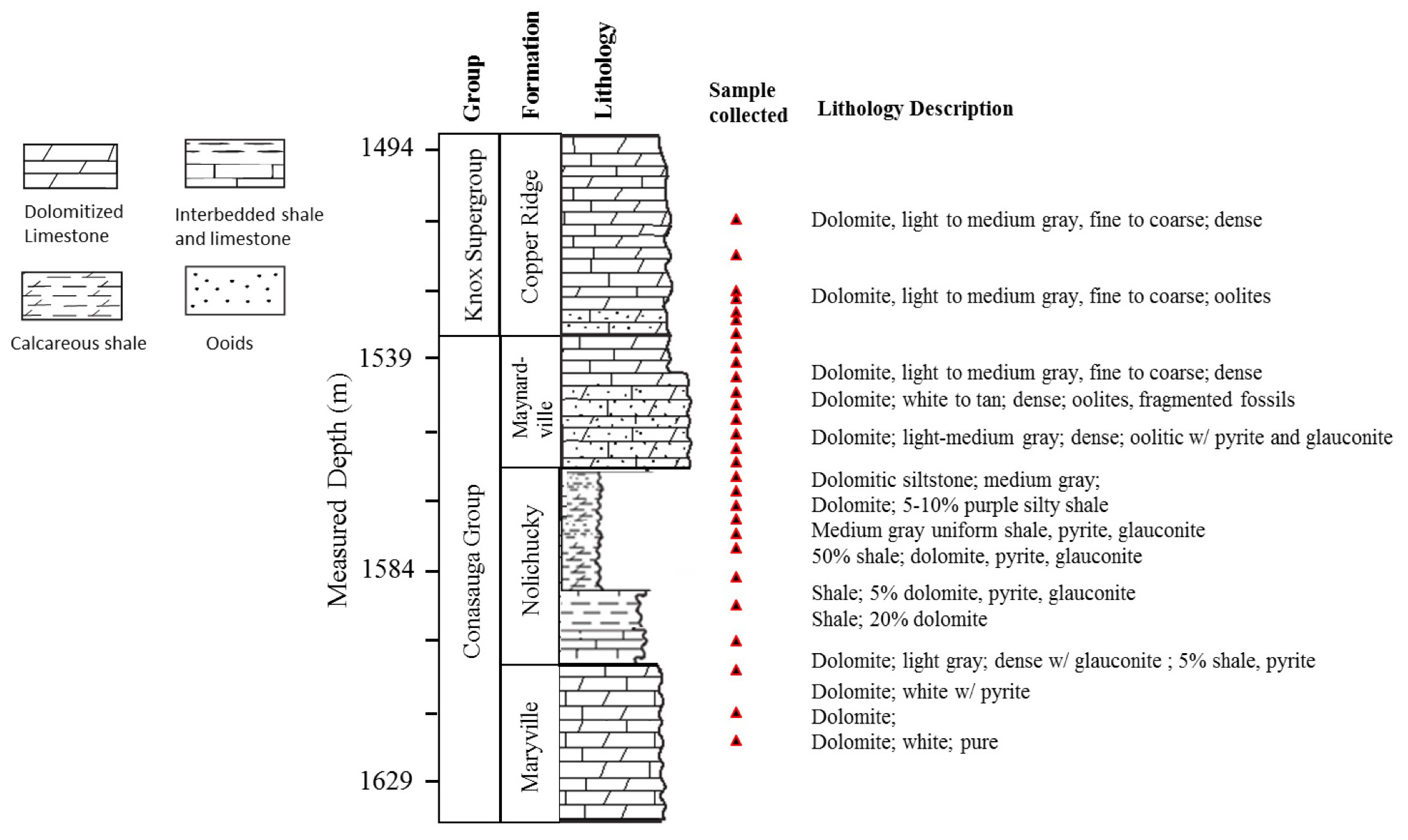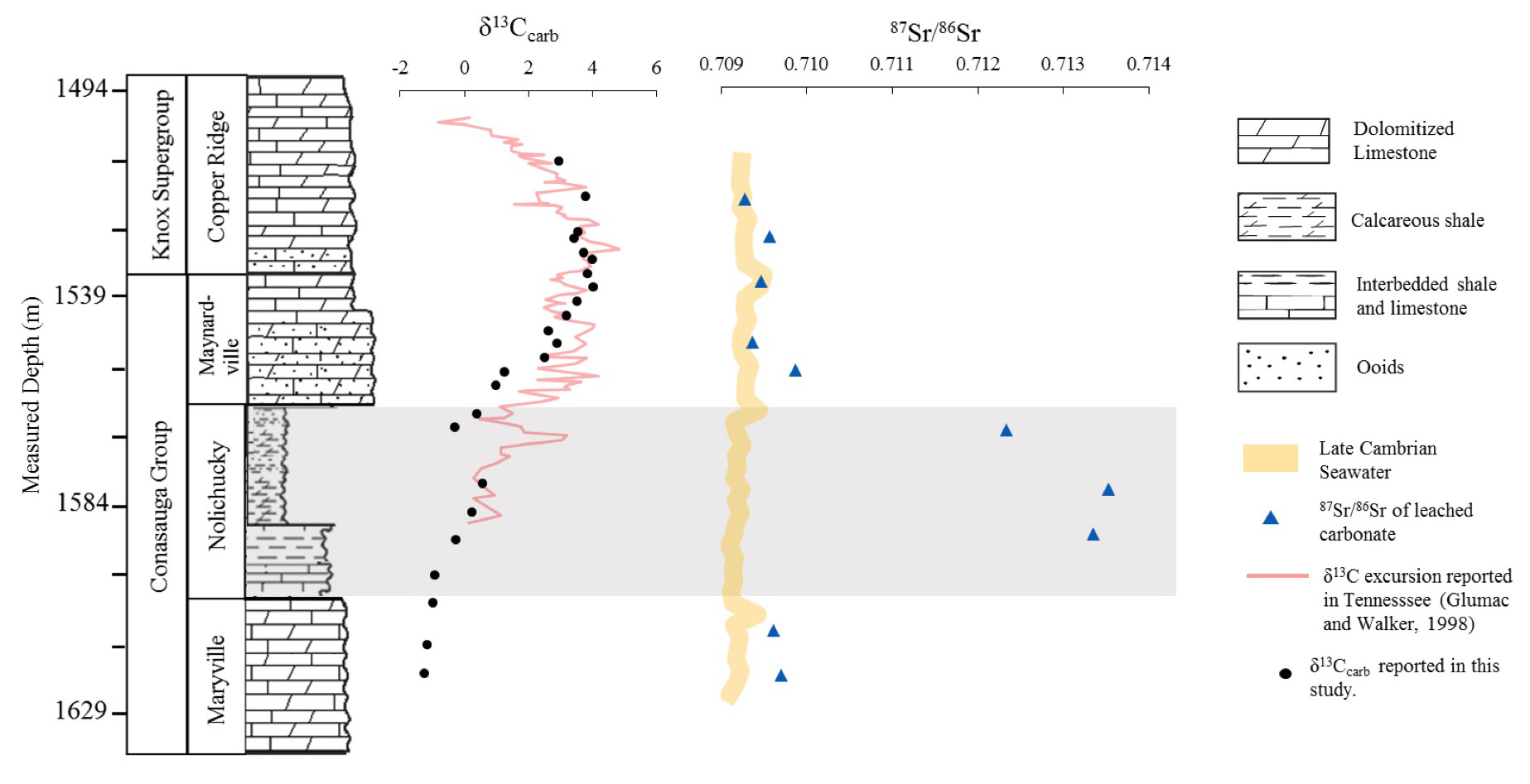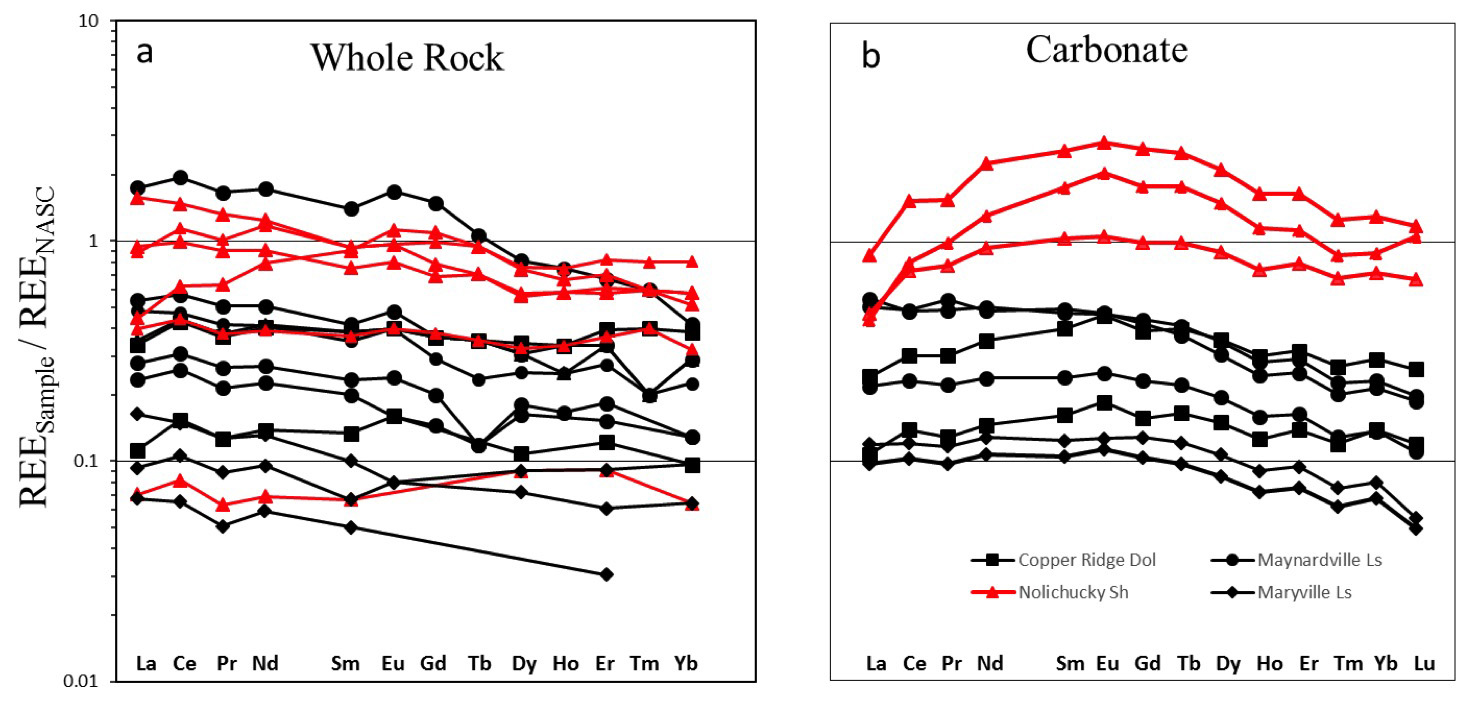Reports: ND256243-ND2: A Chemostratigraphic Study of Regional and Global Controls on Deposition and Preservation of Late Cambrian Shales of the Conasauga Formation
Brian W. Stewart, PhD, University of Pittsburgh
The occurrence of black shale in the geologic record is largely associated with euxinic and anoxic depositional environments, which allow significant organic carbon preservation and associated hydrocarbon resources. In some cases, widespread deposition of black shale facies is thought to cause global oceanic anoxia, resulting in large perturbations in the biogeochemical cycling of nutrients and redox-sensitive elements. With the support of ACS-PRF, we are carrying out an investigation of the Late Cambrian Conasauga group of the Central Appalachian Basin, which was deposited during a period of global anoxic shale deposition referred to as the SPICE event (Steptoean Positive Carbon Isotope Excursion; Saltzman et al., 1998, 2000). This event may have resulted in dramatic increases in atmospheric pO2 and concomitant changes in ocean chemistry that have been recorded in Late Cambrian platform carbonates in other parts of the world. Moreover, a better understanding of the geochemical stratigraphy within the Conasauga Group and Copper Ridge Dolomite (Knox Group) will aid in stratigraphic correlation of upper Cambrian Laurentian sediments within the Central Appalachian region and expand on our knowledge of a Cambrian aged petroleum system currently of interest. This study integrates stratigraphy, δ13Ccarb and 87Sr/86Sr with trace element data to establish a chemostratigraphy of core material sampling the Upper Cambrian Conasauga Group, in the Central Appalachian region prior to and during SPICE.
The samples for this study consist of core material from Southeastern Ohio in the Central Appalachian Basin, provided by the Ohio Geological Survey. The sample interval contains Middle and Late Cambrian sedimentary rocks (~497-493 Ma) deposited off the coast of Laurentia, including the Maryville Limestone, Nolichucky Shale and Maynardville Limestone Formations of the Conasauga group, as well as portions of the Copper Ridge Formation of the overlying Knox Group. The Conasauga Group is composed of interbedded shale and carbonate sequences deposited on the eastern Laurentian passive margin and known to contain economic hydrocarbon deposits in the deeper portions of the basin.
Core billets (28 total) were cut at 7.5 m intervals over a 106 m section of core, avoiding sampling of secondary bedding structures and with denser sampling every 1.5 m near formation boundaries (Fig. 1). Chips were cut for petrographic analysis, and the remaining sample was powdered in a tungsten carbide ball mill to a particle size of <20 microns. Four splits were taken for subsequent analysis. A selective leaching method was used to obtain the carbonate-hosted trace element concentrations. Aliquots were taken from the leachate solution for trace and rare earth element analysis by Activation Laboratories Ltd.
Figure 1. Stratigraphy, sampling locations, and lithology of the core used in this study
For carbon isotope analysis, aliquots of powdered, bulk carbonate samples were analyzed at the University of California, Davis Stable Isotope Laboratory for δ13C. All strontium isotope prep was performed in a clean lab under a HEPA filtered hood at the University of Pittsburgh. Samples for Sr isotope analysis were processed through microcolumns containing 300 µL Sr-Resin¨, following the procedure of Wall et al. (2013), and analyzed on a Thermo Scientific Neptune Plus double-focusing MC-ICP-MS.
The sample interval shows a δ13Ccarb excursion comparable in magnitude to other correlative δ13C excursions around the globe (Fig. 2; Saltzman et al., 1998; Glumac and Walker, 1998). The robustness of the δ13Ccarb excursion measured in this study seems to be relatively unaffected by mineralogical and digenetic alteration, having a continuous positive progression through both biogenic and matrix cement carbonate. There is a small facies influence on the positive δ13Ccarb excursion in our samples within upper clastic-dominated Nolichucky Formation. However, positive δ13Ccarb values persist through siliciclastic-dominant subtidal, intertidal and finally supratidal facies. In addition, they conform well to δ13Ccarb values measured in the Conasauga Group ~200 miles south, on the other side of the Rome Trough (Glumac and Walker, 1998).
Figure 2. Variations in the isotopic composition of C and Sr in the studied section.
In the carbonate facies, the 87Sr/86Sr of acetic acid-leachable minerals (i.e., calcite, dolomite) tracks reasonably well with expected Cambrian seawater values (Fig. 2). However, the ratios diverge significantly within the clastic material of the Nolichucky Formation, which likely reflects diagenetic leaching of Sr from the clastic portion and subsequent incorporation in carbonate cement. This is consistent with the rare earth element (REE) data, which show that carbonate cement extracted from the Nolichucky Formation has significantly different REE patterns than carbonate from limestone (Fig. 3).
Figure 3. Shale-normalized rare earth element patterns in a) whole rock samples and b) carbonate leachates. The red patterns are those of the Nolichucky Shale (carbonate-cemented clastic rock).
Drawdown of redox-sensitive elements such as U in carbonate during the peak of the SPICE event recorded in this section suggests that deposition of anoxic sediments (black shale) was widespread, and that the Nolichucky Shale itself (particularly deeper in the basin, where it is hydrocarbon-rich) was a part of this event. Continued work is focusing on proxies for redox conditions and weathering intensity recorded in this and related sections.
The work reported here made up the bulk of the Masters thesis for Mr. Justin Mackey, who graduated in summer of 2017 (Mackey, 2017). It also partially supported two other graduate students who investigated the rare earth element distributions in organic-rich mudrocks. A manuscript is currently in preparation based on these results for Palaeogeography, Palaeoclimatology, Palaeoecology.
References Cited:
Glumac, B., Walker, K.R. (1998) J. Sed. Res. 68, 1212-1222.
Mackey, J.E. (2017) A chemostratigraphic study of regional and global controls on deposition and preservation of Late Cambrian shales and carbonates of the Conasauga Group, Appalachian Basin, USA. M.S. Thesis, University of Pittsburgh.
Saltzman, M.R., Ripperdan, R.L., Brasier, M.D., Lohmann, K.C., Robison, R.A., Chang, W.T., Peng, S., Ergaliev, E.K., Runnegar, B. (2000) Palaeogeog. Palaeoclimatol. Palaeoecol. 162, 211-223.
Saltzman, M.R., Runnegar, B., Lohmann, K.C. (1998) Geol. Soc. Am. Bull. 110, 285-297.














